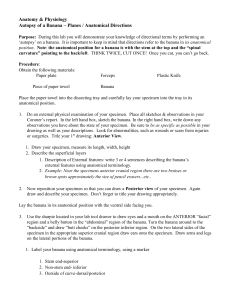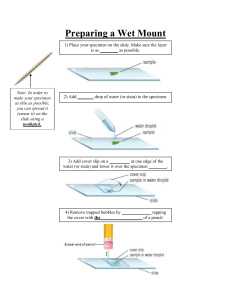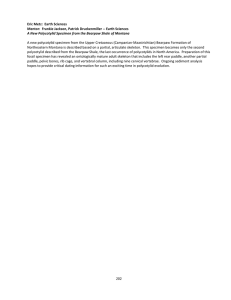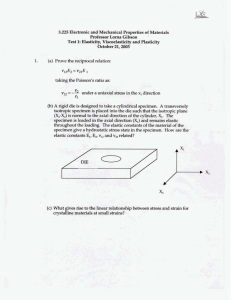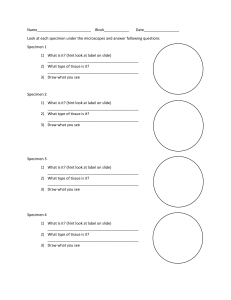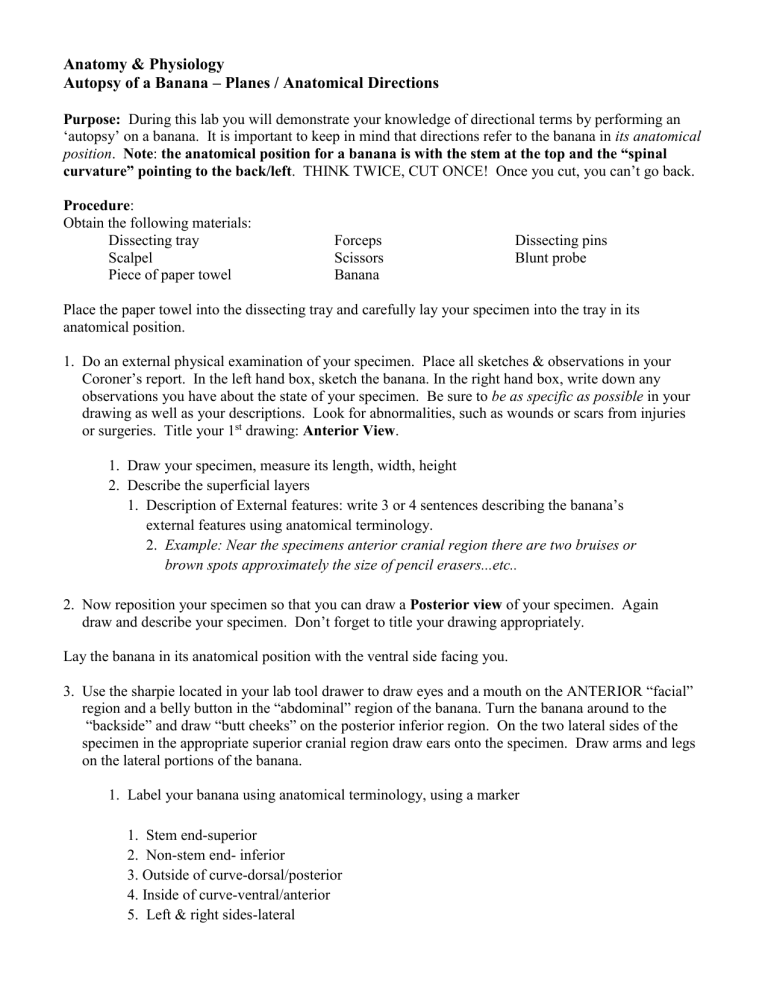
Anatomy & Physiology Autopsy of a Banana – Planes / Anatomical Directions Purpose: During this lab you will demonstrate your knowledge of directional terms by performing an ‘autopsy’ on a banana. It is important to keep in mind that directions refer to the banana in its anatomical position. Note: the anatomical position for a banana is with the stem at the top and the “spinal curvature” pointing to the back/left. THINK TWICE, CUT ONCE! Once you cut, you can’t go back. Procedure: Obtain the following materials: Dissecting tray Scalpel Piece of paper towel Forceps Scissors Banana Dissecting pins Blunt probe Place the paper towel into the dissecting tray and carefully lay your specimen into the tray in its anatomical position. 1. Do an external physical examination of your specimen. Place all sketches & observations in your Coroner’s report. In the left hand box, sketch the banana. In the right hand box, write down any observations you have about the state of your specimen. Be sure to be as specific as possible in your drawing as well as your descriptions. Look for abnormalities, such as wounds or scars from injuries or surgeries. Title your 1st drawing: Anterior View. 1. Draw your specimen, measure its length, width, height 2. Describe the superficial layers 1. Description of External features: write 3 or 4 sentences describing the banana’s external features using anatomical terminology. 2. Example: Near the specimens anterior cranial region there are two bruises or brown spots approximately the size of pencil erasers...etc.. 2. Now reposition your specimen so that you can draw a Posterior view of your specimen. Again draw and describe your specimen. Don’t forget to title your drawing appropriately. Lay the banana in its anatomical position with the ventral side facing you. 3. Use the sharpie located in your lab tool drawer to draw eyes and a mouth on the ANTERIOR “facial” region and a belly button in the “abdominal” region of the banana. Turn the banana around to the “backside” and draw “butt cheeks” on the posterior inferior region. On the two lateral sides of the specimen in the appropriate superior cranial region draw ears onto the specimen. Draw arms and legs on the lateral portions of the banana. 1. Label your banana using anatomical terminology, using a marker 1. Stem end-superior 2. Non-stem end- inferior 3. Outside of curve-dorsal/posterior 4. Inside of curve-ventral/anterior 5. Left & right sides-lateral 2. Color code next to your drawing Return your specimen to its anatomical position. 4. Carefully make a transverse cut about 1 inch inferior to the cranium (stem) at the cervical region of your specimen. Essentially you are decapitating the specimen. Make a second transverse cut about 1 inch superior to the base of your specimen. Make another transverse cut at the umbilical region. Note on your report how many pieces your specimen is in. Your specimen is now in ____________ pieces. **Note: All drawings will show the INSIDE of your banana. 5. Using the medial section draw the superior cross section/transverse cut SURFACE created from the cut in step #3. The surfaces are now referred to as cross-section view. Also, describe what you see. 1. transverse cervical cut cross sectional view: 2. transverse umbilical cut cross sectional view of inferior most portion of trunk section: 6. Using the Cranial section created in step 3, carefully make a frontal/coranal incision. Draw the anterior and posterior views resulting from this frontal incision in your report. The result of this cut is now referred to a longitudinal view. 1. anterior longitudinal view 2. posterior longitudinal view 7. Using the medial section from #3, make a midsagittal incision. Draw the left and right views of this midsagittal incision in your report. Make sure you label which drawing is which. 1. Right sagittal longitudinal view 2. Left sagittal longitudinal view 8. Using the left sagittal section of the abdominal-pelvic region from step #6, make a parasagittal incision. Draw the left and right views of this parasagittal incision in your report. 1 Right parasagittal longitudinal view 2. Left parasagittal longitudinal view 9. Make an Oblique section through the section containing the legs. Draw the results of the cut. 1. cut surface of oblique section 10. Using one of the two pieces from step #9 above, place the piece so that the cut is down flat on the dissecting pan. Now using your forceps and blunt nosed probe, carefully dissect away the “membrane” surrounding your specimen to reveal the “muscle” layer below. Draw and describe the inner surface of the membrane as well as the outer surface of the muscle. 11. Now that you have thoroughly examined your specimen from all angles, be kind and thoroughly clean your lab area. All specimen and paper pieces need to be thrown away. (Please don’t eat your specimen!) All equipment needs to be cleaned and returned to its appropriate containers. 12. Answer the following questions. 1. How do a frontal and midsagittal section (cut) differ? 2. When would an oblique section (cut) be most appropriate? 3. How do a midsagittal and parasagittal section (cut) differ? 4. In your own words, define the following words: 1. Section 2. Anterior/ventral 3. Dorsal/posterior 4. Midsagittal 5. Oblique 6. Parasagittal Banana Autopsy Coroner’s Report Performed by Dr. ___________________________________, Coroner Lab Quiz 1. Anterior Positon 2. Posterior Position 3. Your specimen is now in ____________ pieces. 4. Superior/Transverse Cervical Cross Section of Medial Section 5. Anterior/Transverse Umbilical View of Cranial Section of Frontal Incision 6. Anterior Longitudinal View 7. Posterior Longitudinal View 8. Right Sagittal Longitudinal View 9. Left Sagittal Longitudinal View 10. Right Parasagittal Longitudinal View 11. Left Parasagittal Longitudinal View 12. Cut Surface of Oblique Section

